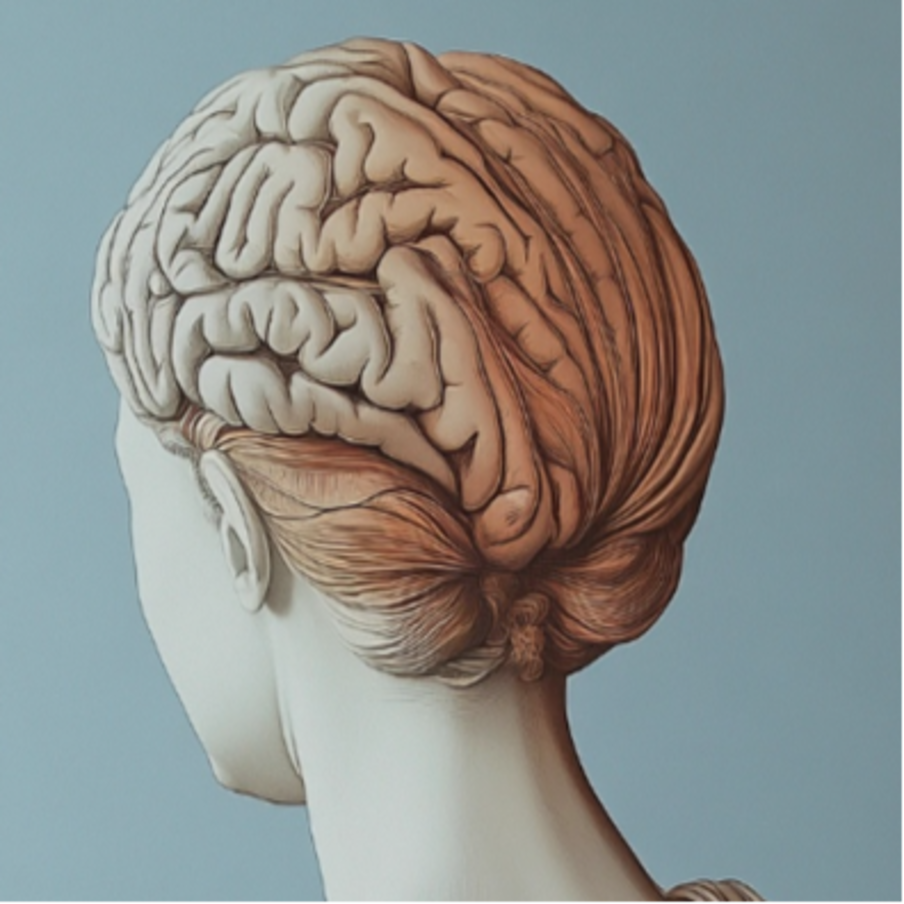Research
Please click below to read more on each research track. You will also find a full publication list.

The TARA research project

Bioindicators of depression in young people

The neuroscience of depression in young people

How to measure mental health in young people

Voices of depressed youth

Psychedelic Clinical Science

Improving mental health for future doctors - initial phase - seeking funding

Mental health in the young indigenous Sami people of the north

The TARA research project
Frontiers in Human Neuroscience (2014)
Bioindicators of depression in young people


The neuroscience of depression in young people
Suggested Reading

How to measure mental health in young people
Voices of depressed youth

1. Dealing with overwhelming life situations - young people’s experiences of becoming depressed

Psychedelic Clinical Sciences
1. MDMA-assisted therapy for the treatment of young adults with therapy resistant depression
2. The effect of psilocybin on MDD symptom severity and synaptic density
Improving mental health for future doctors - initial phase & seeking funding

Suggested reading
Training for Awareness, Resilience and Action (TARA) for medical students: a single-arm mixed methods feasibility study to evaluate TARA as an indicated intervention to prevent mental disorders and stress-related symptoms
BMC Medical Education

Mental health in the young indigenous Sami people of the north - initial phase & seeking funding
Publications
2025
- Niemi M, Mölsted Alvesson H, Helldén D, Biremann O, Henje E, Nordenstedt H, Sundberg CJ. Nursing and medical students' views on their knowledge related to the Sustainable Development Goals: a mixed methods study at three Swedish universities. BMC Medical Education. 2025;25(1):434. doi:10.1186/s12909-025-06991-5
- Blomqvist I, Chaplin JE, Henje E, Dennhag I. Psychometric properties and post-hoc CAT analysis of the pediatric PROMIS® item banks anxiety and depressive symptoms in a combined Swedish Child and Adolescent Psychiatry and School sample. Quality of Life Research. 2025. doi:10.1007/s11136-025-03898
2024
- Ekbäck E, Strömbäck M, Rådmark L, Öjebrandt J, Molin J, Henje E. Dealing with overwhelming life situations: young people's experiences of becoming depressed. Scandinavian Journal of Child and Adolescent Psychiatry and Psychology. 2024;12(1):63–71. doi:10.2478/sjcapp-2024-0007
- Tymofiyeva O, Sipes B, Luks T, Hamlat E, Samson T, Hoffman T, Gidden D, Jakary A, Li Y, Ngan T, Henje E, Yang T. Interoceptive brain network mechanisms of mindfulness-based training in healthy adolescents. Frontiers in Psychology (Health Psychology). 2024;15. doi:10.3389/fpsyg.2024.1410319
- Vestin M, Blomqvist I, Henje E, Dennhag I. Psychometric validation of the Montgomery-Åsberg Depression Rating Scale – Youth (MADRS-Y) in a clinical sample. Nordic Journal of Psychiatry. 2024:1–8
- Henje E, Wiberg M, Dennhag I. Translation and validation of the Swedish version of the Self-Compassion Scale for Youth. Australian Psychologist. 2024;59(1):24–35. doi:10.1080/00050067.2023.2217326
- Ekbäck E, Rådmark L, Molin J, Strömbäck M, Midgley N, Henje E. The Power Threat Meaning Framework: a qualitative study of depression in adolescents and young adults. Frontiers in Psychiatry. 2024;15:1393066
- Cassidy K, Healy CJ, Henje E, D’Andrea W. Childhood trauma, challenging experiences, and post-traumatic growth in ayahuasca use. Drug Science, Policy and Law. 2024. doi:10.1177/20503245241238316
2023
- Åslund L, Jernelöv S, Serlachius E, Vigerland S, Wicksell RK, Henje E, Lekander M. Internet-delivered cognitive behavioral therapy for adolescents with insomnia: feasibility and preliminary efficacy. Clinical Child Psychology and Psychiatry. 2023. doi:10.1177/13591045231202426
- Åslund L, Andreasson A, Lekander M, Henje E, Dennhag I. Disturbed sleep and patterns of psychiatric symptoms and function in a school-based sample of adolescents. Clinical Child Psychology and Psychiatry. 2023;28(4):1524–1535
- Vestin M, Åsberg M, Wiberg M, Henje E, Dennhag I. Psychometric validity of the Montgomery and Åsberg Depression Rating Scale for Youths (MADRS-Y). Nordic Journal of Psychiatry. 2023;77(5):421–431
- Ekbäck E, Rådmark L, Granåsen G, Svärling R, Sörlin M, Schönbeck C, Henje E. Clinical effectiveness of training for awareness, resilience, and action for adolescents and young adults with depression: the pilot phase of a multicenter randomized controlled trial. Frontiers in Psychiatry. 2023;14:1130035. doi:10.3389/fpsyt.2023.1130035
- Ekbäck E, Blomqvist I, Dennhag I, Henje E. Psychometric properties of the Swedish version of the Reynolds Adolescent Depression Scale Second Edition (RADS-2) in a clinical sample. Nordic Journal of Psychiatry. 2023;77(4):383–392
- Rådmark L, Osika W, Wallén MB, Nissen E, Lönnberg G, Bränström R, Henje E, Gardner R, Fransson E, Karlsson H, Niemi M. Autonomic function and inflammation in pregnant women participating in a randomized controlled study of Mindfulness-Based Childbirth and Parenting. BMC Pregnancy and Childbirth. 2023;23(1):237. doi:10.1186/s12884-023-05528-2
2022
- Tymofiyeva O, Hu MY, Sipes BS, Jakary A, Glidden DV, Jariwala N, Bhandari S, Parks KC, Nguyen C, Henje E, et al. A feasibility study of a remotely-delivered mindfulness-based training for adolescents during the COVID-19 pandemic. Frontiers in Psychiatry. 2022;13:838694
- Grudin R, Ahlen J, Mataix-Cols D, Lenhard F, Henje E, Månsson C, Sahlin H, Beckman M, Serlachius E, Vigerland S. Therapist-guided and self-guided internet-delivered behavioural activation for adolescents with depression: a randomised feasibility trial. BMJ Open. 2022;12(12):e066357
- Ekbäck E, von Knorring J, Burström A, Hunhammar D, Dennhag I, Molin J, Henje E. Training for Awareness, Resilience and Action (TARA) for medical students: a single-arm mixed methods feasibility study to evaluate TARA as an indicated intervention to prevent mental disorders and stress-related symptoms. BMC Medical Education. 2022;22(1):132
2021
- Tymofiyeva O, Henje E, Yuan JP, Huang CY, Connolly CG, Ho TC, Bhandari S, Parks KC, Sipes BS, Yang TT. Reduced anxiety and changes in amygdala network properties in adolescents with training for awareness, resilience, and action (TARA). NeuroImage: Clinical. 2021;29:102521
- Ekbäck E, Granåsen G, Svärling R, Blomqvist I, Henje E. Clinical effectiveness of Training for Awareness Resilience and Action online compared to standard treatment for adolescents and young adults with depression: study protocol and analysis plan for a pragmatic, multicenter randomized controlled superiority trial. Frontiers in Psychiatry. 2021;12:674583
- Carlberg Rindestig F, Wiberg M, Chaplin JE, Henje E, Dennhag I. Psychometrics of three Swedish physical pediatric item banks from the Patient-Reported Outcomes Measurement Information System (PROMIS): pain interference, fatigue, and physical activity. Journal of Patient-Reported Outcomes. 2021;5(1):105
- Blomqvist I, Ekbäck E, Dennhag I, Henje E. Validation of the Swedish version of the Reynolds Adolescent Depression Scale Second Edition (RADS-2) in a normative sample. Nordic Journal of Psychiatry. 2021;75(4):292–300
- Blomqvist I, Chaplin JE, Nilsson E, Henje E, Dennhag I. Swedish translation and cross-cultural adaptation of eight pediatric item banks from the Patient-Reported Outcomes Measurement Information System (PROMIS). Journal of Patient-Reported Outcomes. 2021;5(1):80
2020
- Chaplin J, Nilsson E, Blomqvist I, Stackelberg M, Ericsson M, Henje E, Wicksell R, Blomberg K, Dennhag I. Translation and cross-cultural adaptation of ten pediatric PROMIS item banks into Swedish. Quality of Life Research. 2020;29(Suppl 1):S175–S176
- Åslund L, Lekander M, Wicksell RK, Henje E, Jernelöv S. Cognitive-behavioral therapy for insomnia in adolescents with comorbid psychiatric disorders: a clinical pilot study. Clinical Child Psychology and Psychiatry. 2020;25(4):958–971
- Yuan JP, Connolly CG, Henje E, Sugrue LP, Yang TT, Xu D, Tymofiyeva O. Gray matter changes in adolescents participating in a meditation training. Frontiers in Human Neuroscience. 2020;14:319
- Tymofiyeva O, Yuan JP, Kidambi R, Huang CY, Henje E, Rubinstein ML, Jariwala N, Max JE, Yang TT, Xu D. Neural correlates of smartphone dependence in adolescents. Frontiers in Human Neuroscience. 2020;14:564629
- Henje E, Rindestig FC, Gilbert P, Dennhag I. Psychometric validity of the Compassionate Engagement and Action Scale for Adolescents: a Swedish version.Scandinavian Journal of Child and Adolescent Psychiatry and Psychology. 2020;8:70–80
- Bayard F, Abé C, Wrobel N, Ingvar M, Henje E, Petrovic P. Emotional instability relates to ventral striatum activity during reward anticipation in females. Frontiers in Behavioral Neuroscience. 2020;14:76
2019
- Tymofiyeva O, Yuan JP, Birmaher B, Phillips ML, Yang TT, Xu D, Henje E. Reduced structural connectivity of fronto-limbic circuitry in adolescents with major depressive disorder. NeuroImage: Clinical. 2019;22:101728
- Blomqvist I, Dennhag I, Henje E. Development of a culturally adapted school-based program for adolescents with mental health problems in northern Sweden. Scandinavian Journal of Child and Adolescent Psychiatry and Psychology. 2019;7(1):3–12
- Tymofiyeva O, Henje E, Yuan JP, Huang CY, Connolly CG, Yang TT, Xu D. Increased internalizing symptoms associated with reduced resting-state functional connectivity in young people at familial risk for depression. Frontiers in Human Neuroscience. 2019;13:234
- Rådmark L, Wiberg M, Henje E, Dennhag I. Development and psychometric evaluation of a Swedish version of the Adolescent Mindful Attention Awareness Scale (AMAAS). Scandinavian Journal of Child and Adolescent Psychiatry and Psychology. 2019;7(1):46–55
2018
- Tymofiyeva O, Connolly CG, Henje E, Simmons AN, Yang TT, Xu D. Resting-state fMRI in adolescent depression and resilience: evidence of altered default mode network connectivity. PLoS ONE. 2018;13(4):e0195730
- Henje E, von Knorring A-L, Molin L, Karlsson H, Wicksell RK, Wiberg M, Osika W. Mindfulness-based group training in adolescents with stress-related symptoms: a randomized controlled trial. Frontiers in Psychiatry. 2018;9:546
2017
- Henje E, Tymofiyeva O, Yuan JP, Xu D, Yang TT. Resting-state functional connectivity of the adolescent brain: associations with depression, resilience, and substance use. Journal of Child Psychology and Psychiatry. 2017;58(12):1372–1382
- Tymofiyeva O, Henje E, Xu D, Yang TT. Structural neuroimaging in adolescent depression. Child and Adolescent Psychiatric Clinics of North America. 2017;26(3):407–429
2016
- Tymofiyeva O, Henje E, Yuan JP, Connolly CG, Ho TC, Xu D, Yang TT. Default mode network connectivity in adolescents with major depressive disorder. Biological Psychiatry. 2016;79(9):S270
- Henje E, Wicksell RK, Osika W, Karlsson H, Molin L, von Knorring A-L. Mindfulness-based intervention in adolescents: a randomized controlled trial. Child and Adolescent Psychiatry and Mental Health. 2016;10:36
2015–2010
- Schmalzl L, Powers C, Henje Blom E: Neurophysiological and neurocognitive mechanisms underlying the effects of yoga-based practices: towards a comprehensive theoretical framework. Front Hum Neurosci 2015, 9:235.
- Ho TC, Connolly CG, Henje Blom E, LeWinn KZ, Strigo IA, Paulus MP, Frank G, Max JE, Wu J, Chan M et al: Emotion-Dependent Functional Connectivity of the Default Mode Network in Adolescent Depression. Biol Psychiatry 2015, 78(9):635–646.
- Henje Blom E, Han LK, Connolly CG, Ho TC, Lin J, LeWinn KZ, Simmons AN, Sacchet MD, Mobayed N, Luna ME et al: Peripheral telomere length and hippocampal volume in adolescents with major depressive disorder. Transl Psychiatry 2015, 5(11):e676.
- Henje Blom E, Connolly CG, Ho TC, LeWinn KZ, Mobayed N, Han L, Paulus MP, Wu J, Simmons AN, Yang TT: Altered insular activation and increased insular functional connectivity during sad and happy face processing in adolescent major depressive disorder. J Affect Disord 2015, 178:215–223.
- Ho TC, Yang G, Wu J, Cassey P, Brown SD, Hoang N, Chan M, Connolly CG, Henje-Blom E, Duncan LG et al: Functional connectivity of negative emotional processing in adolescent depression. J Affect Disord 2014, 155:65–74.
- Henje Blom E, Serlachius E, Chesney MA, Olsson EM: Adolescent girls with emotional disorders have a lower end-tidal CO₂ and increased respiratory rate compared with healthy controls. Psychophysiology 2014, 51(5):412–418.
- Henje Blom E, Duncan LG, Ho TC, Connolly CG, LeWinn KZ, Chesney M, Hecht FM, Yang TT: The development of an RDoC-based treatment program for adolescent depression: "Training for Awareness, Resilience, and Action" (TARA). Front Hum Neurosci 2014, 8:630.
- Henje Blom E, Forsman M, Yang TT, Serlachius E, Larsson JO: Latent Classes of Symptoms related to Clinically Depressed Mood in Adolescents. Scand J Child Adolesc Psychiatr Psychol 2014, 2(1):19–28.
- Henje Blom E, Lekander M, Ingvar M, Asberg M, Mobarrez F, Serlachius E: Pro-inflammatory cytokines are elevated in adolescent females with emotional disorders not treated with SSRIs. J Affect Disord 2012, 136(3):716–723.
- Blom EH, Bech P, Högberg G, Larsson JO, Serlachius E: Screening for depressed mood in an adolescent psychiatric context by brief self-assessment scales – testing psychometric validity of WHO-5 and BDI-6 indices by latent trait analyses. Health Qual Life Outcomes 2012, 10(1):149.
- Henje Blom EC, Serlachius E, Larsson JO, Theorell T, Ingvar M: Low Sense of Coherence (SOC) is a mirror of general anxiety and persistent depressive symptoms in adolescent girls – a cross-sectional study of a clinical and a non-clinical cohort. Health Qual Life Outcomes 2010, 8(1):58.
- Henje Blom E, Olsson EM, Serlachius E, Ericson M, Ingvar M: Heart rate variability (HRV) in adolescent females with anxiety disorders and major depressive disorder. Acta Paediatr 2010, 99(4):604–611.
- Blom EH, Larsson JO, Serlachius E, Ingvar M: The differentiation between depressive and anxious adolescent females and controls by behavioural self-rating scales. J Affect Disord 2010, 122(3):232–240.
- Henje Blom E, Olsson EMG, Serlachius E, Ericson M, Ingvar M: Heart rate variability is related to self-reported physical activity in a healthy adolescent population. Eur J Appl Physiol 2009, 106(6):877–883. doi:10.1007/s00421-009-1089-3
Click here for fulltext formats:
https://loop.frontiersin.org/people/231101/overview or https://www.researchgate.net/profile/Eva-Henje/research
Funding
The research I have been involved with have been funded by The Swedish Research Council, The Swedish Society of
Medicine, the County Council of the Region Västerbotten, the Region Västernorrland and Stockholm, the Kempe
foundation, the Swedish Brain Foundation, Kavli Foundation, Thuring Foundation, Lars Jacob Boethius Foundation,
Oskar Foundation, Queen Silvias Foundation, Norrsken Mind, Viriditas Foundation and the National Institutes of
Health in the US.
Research Collaboration & Acknowledgements
All the research has depended on a vast net of collaboration and support. It is beyond the scope of this presentation to name everyone who has been contributing. Each collaborator is listed under each project and in each article in the publication list. My research group is constantly re-forming as students and collaborators come and go, for more details see my website at Umeå University.
Nevertheless there are some extraordinary beings who have been of extra importance and contributed with their enthusiasm, skills, endurance, humility, patience and warmheartedness - thank you - it is and have been such a gift working with you!
Margaret Chesney - former director of the Osher Center for Integrative Medicine, USCF
Olga Tymofiyeva - former PI for the TARA research at UCSF
Tony Yang - current PI for the TARA project ar UCSF
Erik Ekbäck - post doc in the TARA project at Umeå University
Anisha Larsson - project coordinator for the TARA-study
Inga Dennhag - colleague at Umeå University
Ida Blomqvist - former PhD student in the psychometric studies
Kerstin Eliasson - head of the Child and Adolescent Psychiatric Clinic in Region Västerbotten

